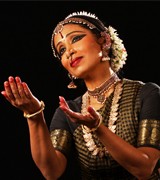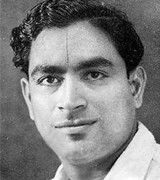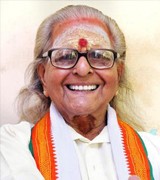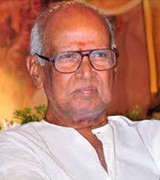COVER STORY
DANCE SEASON 2014-15: Uneven performances, priorities
V.V. RAMANI

December 2014. The air was filled with excitement as the cultural season breezed in, but it breezed out quietly without any ripples. The season had its usual spate of star performers with their routine fare and talented youngsters aspiring to climb up the ladder. No new prodigies surfaced nor were there any ‘Oh, you really missed it’ kind of performances. The season was a blend of some good, some bad, some mediocre.
For me, the mood for the season set in with an invitation to attend an international conference on Bharatanatyam in Singapore. Realisation dawned on me while listening to the interesting, informative sessions, that not only has Bharatanatyam become a global art form but the issues and problems that dancers have to contend with – be it future directions, funding issues or dwindling audience – are the same in either Chennai or Singapore. This brought me back to the dance conferences of Chennai. Dancers whom these conferences target are conspicuously absent and the regular rasika is not motivated enough to come because the short sessions packed one after another leave no time for either the speakers to present their concepts or for interactive discussions on issues.
CENTENARY FEATURE
V.V. SADAGOPAN: The star that lights the way
SUJATHA VIJAYARAGHAVAN

“He was a star, handsome and charismatic. He was a graduate and an acclaimed Carnatic musician. When I learnt that the producers of the new film were planning to have him as the hero, I knew that I stood no chance of being considered for the role.” The aspiring young actor who wrote this in his autobiography was none other than M.G. Ramachandran, the charismatic film actor-turned Chief Minister. And the hero he lost out to was V.V. Sadagopan.
Viravanallur Vedantam Sadagopan was born on 29 January 1915 in an orthodox Vaishnavite family and spent his childhood and youth in Tirunelveli. He was a graduate and pursued a parallel vocation in music. He had his musical training under Namakkal Sesha Iyengar and Ariyakudi Ramanuja Iyengar and became one of the most sought after musicians of the 1930s. One of his acclaimed masterpieces was the Tyagaraja kriti Enta vedukondu Raghava in the raga Saraswati Manohari, which he later recorded in a disk.
CLASS ACT
CHEMENCHERI KUNHIRAMAN NAIR: The grand old man of Kathakali
K.K. GOPALAKRISHNAN

Kathakali guru Chemencheri Kunhiraman Nair is 98 years old. He still performs and the favourite role is Krishna. Popularly known as Chemencheri Asan, this grand old man of Kathakali is the still-active last link of the ancient Kallatikkotan style, the very pristine school of the art.
For the art aficionados of the erstwhile Malabar, northern Kerala, thespian Chemencheri Kunhiraman Nair is more than a living legend. Whether at home, training place, performance or public place, you never see him without his innocent smile and eyes twinkling through his thick spectacles.
Chemencheri was born on 26 June 1916. Even at the age of 98, he performs – now with third to sixth generations of artists – like a great grandfather more active than most of his grand children, and continues to teach.
TRIBUTE
Bapu: a multifaceted artist
PAPPU VENUGOPALA RAO

Bapu was a rare amalgamation of art and culture, literature and music, mythology and modernity. He was perhaps the only artist in India whose style of writing became a Telugu font known after him. Telugus believe that a beautiful girl should look like “Bapu bomma” (Bapu’s picture) with wide eyes, long hair, thin waist and traditionally dressed. He has been an inspiration to many. There are several Ekalavyas of his in many fields – art, painting, cartoons, writing, and movie direction. For his multifaceted contributions he was bestowed awards like the Lifetime Achievement Award for a Cartoonist, several Filmfare awards, national film awards, the honorary doctorate of Kala Prapoorna from Andhra University, and the Padma Shri in 2013. His passing away on 31 August 2014 in Chennai at the age of 80 has left a void in the field of art and literature


